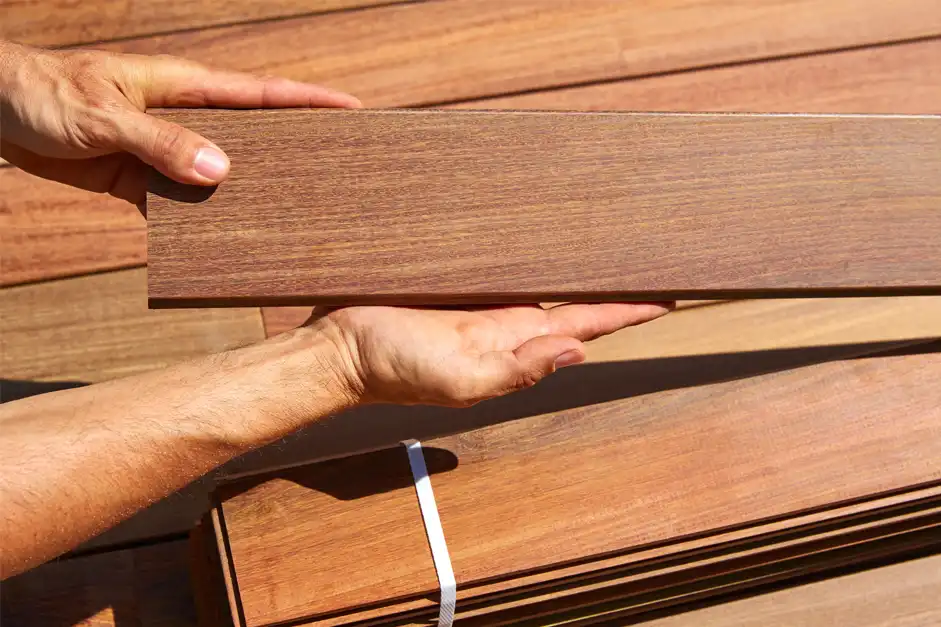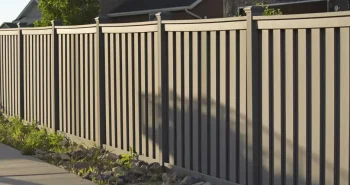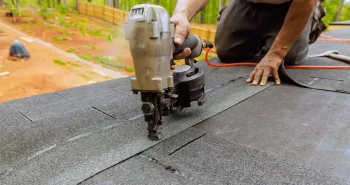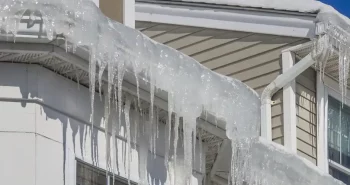Decks are a great way to extend your livable space and enjoy the fresh air. They’re perfect for entertaining, relaxing, or simply having a nice outdoor meal with your family. While the deck design is important, so is using the right materials. But choosing the right deck material for your home takes a bit of consideration. While a few materials may seem to have more advantages than others, it usually comes down to personal preference and budget. To help you choose the best decking material for your home, consider the following guide.
Different Types of Deck Material Options
When building a deck, choosing the right material is crucial. Your choice of decking material impacts appearance, durability, short- and long-term maintenance, and overall cost. However, you don’t simply want to choose the most popular decking material just because everyone else is using it. It’s important to understand each type of decking material’s unique advantages and disadvantages to make an informed decision based on your needs. With that being said, some of the most popular materials for your new deck include the following:
Composite Decking
Composite decking is made from wood fibers, bamboo, and different types of recycled plastic. It’s a man-made material that can mimic the appearance of natural wood while offering enhanced durability. It can also be created in a variety of colors and textures to help match the aesthetics of your home, which is why it’s becoming increasingly popular.
Some of the biggest advantages of choosing composite decking include:
- Durability: Composite decking is resistant to rot, warping, and splintering, offering great long-term durability. This allows you to enjoy a picturesque deck regardless of the severity of the weather.
- Extended Lifespan: The long-term durability results in longer lifespans, with some composite decks lasting up to 30 years or more.
- Low Maintenance: Composite decking doesn’t require staining, sealing, or painting, so upkeep is quite straightforward. A simple cleaning with soap and water is usually all it needs to stay looking its best.
- Eco-Friendly: Most composite deck boards are made from recycled materials, making them an environmentally friendly option.
- Variety of Colors and Textures: Composite boards can be produced to match exterior home styles and colors, allowing for greater deck customization.
For most homeowners, composite decking is the best option available. However, there are also a few downsides to consider.
- Cost: It’s generally one of the more expensive decking products, which may deter more budget-conscious homeowners.
- Weight: Composite decking is also quite heavy, which can make installation challenging and potentially increase the cost of labor.
- Fading and Staining: While resistant to most stains, composite decking can fade over time, especially in areas with high sun exposure.
Plastic Decking / Vinyl Decking / PVC Decking
Plastic decking, also known as vinyl decking or PVC decking, is made entirely from synthetic materials such as polyethylene, polypropylene, or polyvinyl chloride (PVC). Unlike composite decking, PVC decking doesn’t contain wood fibers.
- Maintenance-Free: The planks don’t require any additional maintenance, making them another one of the easiest types of decks to care for.
- Durability: Vinyl decking is one of the most durable options on the market and can often last between 20 and 30 years.
- Lightweight: Plastic decking is lighter than most other materials, so it’s easier to install. Some homeowners even tackle a DIY deck installation with this material.
- Variety of Styles: PVC decking is available in a range of colors and finishes.
- Resistant to Moisture and Insects: Plastic is impervious to moisture, rot, and insect damage, making it great for areas with high humidity or lots of rain.
Many homeowners choose plastic decking for its ease of maintenance and long-lasting performance. However, some of the downsides include:
- Cost: Vinyl decking tends to be on the pricier side, so it might not be the best option to choose if you’re working with a budget.
- Aesthetic Limitations: Plastic decking comes in various colors but does not look like real wood. It’s pretty obvious that it’s made from synthetic materials, which may deter some homeowners. However, advancements in manufacturing have made this common deck material more aesthetically appealing over the years.
- Slippery During Rain: Plastic decking may also be a bit slippery when wet, which may not be ideal for those with children.
Pressure-Treated Wood Decking
Pressure-treated wood decking is made from natural wood chemically treated to resist rot, decay, and insect damage. It’s one of the most common types of materials used due to its aesthetics and cost. Softwoods like pine are used, and the pressure-treatment process infuses the wood with preservatives under pressure. This can extend its lifespan and make it better for outdoor use. Some advantages of this option include:
- Affordability: It’s one of the most cost-effective decking materials available.
- Availability: It’s widely available and can be found in most home improvement stores, making it easy to source and replace.
- Ease of Installation: Pressure-treated wood is also fairly easy to install, so DIY projects are possible.
- Natural Appearance: Many homeowners prefer the natural look of wood, and pressure-treated wood maintains this traditional aesthetic.
There are also some disadvantages of a pressure-treated deck, which include the following:
- Maintenance: Pressure-treated wood requires regular maintenance, including staining, sealing, and occasional sanding, to keep it looking good and to protect it from the elements.
- Chemical Treatment: The wood is treated with chemicals to prevent rot and insect damage, which can concern those with environmental or health sensitivities.
- Potential for Warping and Splitting: Despite the treatment, pressure-treated wood is still prone to warping, cracking, and splitting over time, especially if not properly maintained.
- Shorter Lifespan: Without the proper care, this deck may only last 10 years. However, with the right care, you can extend its lifespan up to 30 years or more.
Traditional Wood Decking
Traditional wood decking refers to untreated wood materials, which are often harder woods like cedar, redwood, or tropical species such as ipe and teak. These woods are often chosen for their natural beauty and resistance to decay but may carry a higher price tag. Still, some homeowners find this option better than pressure-treated wood. The most notable advantages are:
- Aesthetic Appeal: Hardwood options tend to have a warmer, more natural beauty. The wood grains are often unique and add a distinct aesthetic that’s difficult to mimic with other options.
- Variety of Options: Wood decking comes in various species, each with its own color, grain, and texture. You can also stain hardwood decking to get a darker shade that matches your home.
- Strength and Durability: Hardwood options like ipe and teak are incredibly strong and resistant.
If you’re interested in designing your deck with hardwood, it’s also important to consider some of the disadvantages below:
- High Maintenance: Hardwood decking requires regular maintenance to protect it from moisture, UV rays, and insects.
- Cost: High-quality hardwoods like ipe and teak can be expensive, often rivaling or exceeding the cost of composite and PVC decking.
- Environmental Concerns: Harvesting tropical hardwoods can raise environmental concerns, so these wood planks can be difficult to justify as an eco-friendly option.
What Are the Best Materials for Your Deck?
So, which option is the best for you? It really depends on your personal preferences alongside your budget and how much maintenance you want to do. Are you particular about a specific aesthetic? If so, styling may be your deciding factor. If you have a limited budget, the cost may be how you choose your deck materials. And, if you’re not the type to enjoy home maintenance projects, you may be better off sticking to something that requires little to no work. Just keep in mind that some of the budget options may mean that you need to undergo this process again in the future, especially if you aren’t able to care for the materials properly.
Having Trouble Choosing a Decking Material? Partner With the Professionals Today
To help you find the best material for decking projects, partner with the team at First Star Exteriors. The team at First Star Exteriors can help with every step of your build. From planning your deck, choosing the materials, and constructing a durable substructure and deck, our team is committed to providing you with the best results possible. We offer ground-level deck installation, elevated decks, and more. To learn about our deck installation services, contact a member of our team today or schedule a free estimate today.





